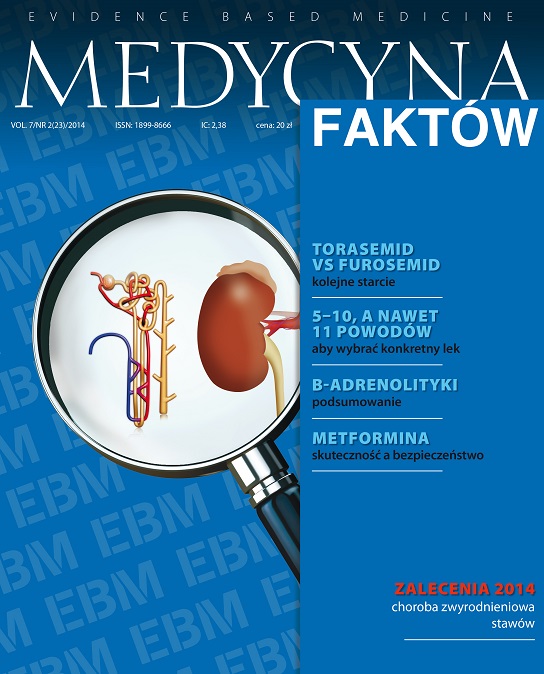Torasemide and furosemide – similarities and differences Review article
Main Article Content
Abstract
Torasemide and furosemide are representatives of the loop diuretics with the same mechanism of action. They belong to the group of sulfonyl benzoic acid. Differences in the chemical structure make these drugs have different pharmacokinetic properties and an additive effect. Torasemide in comparison with furosemide has a higher bioavailability, high protein binding, and the longer half-life. These properties make that torasmide works faster, longer and less frequently causes rapid micturition than furosemide. Torasemide after oral administration is well absorbed from the gastrointestinal tract even in situations of fluid overload in diseases of the heart, kidneys and liver. Torasemide potency is four times greater than the furosemide. The dose of 40 mg of furosemide is equivalent to the 10 mg of torasemide. Torasemide has additionally antialdosteron effect and inhibits the process of fibrosis and myocardial remodeling.
Article Details
Copyright © by Medical Education. All rights reserved.
References
2. Murray M., Deer M., Ferguson J. et al.: Open-label randomized trial of torsemide compared with furosemide therapy for patients with heart failure. Am. J. Med. 2001; 111: 513-520.
3. Muller K., Gamba G., Jaquet F. et al. Torasemide vs furosemide in primary care patients with chronic heart failure NYHA II to IV – efficacy and quality of life. Eur. J. Heart Fail. 2003; 5: 793-801.
4. Torasemid. Filipiak K. (red.). Biblioteka czasopisma Cardiology Journal, tom 14. 2011
5. Friedel H.A., Buckley M.M.: Torasemide. A review of its pharmacological properties and therapeutic potential. Drugs 1991; 41(1): 81-103.

